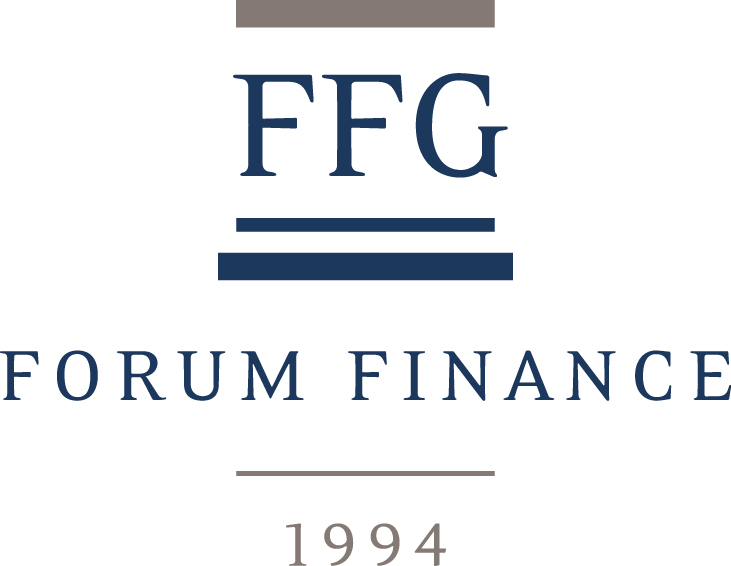Newsletter | April 2024
NVIDIA accounted for 41% of the year-to-date gain in the US Large Cap Index
13.91% THE PERFORMANCE OF THE COPPER PRICE
Investment perspective
The paths of the major economies are increasingly diverging. In the United States, economic activity continues to expand, ruling out a recessionary scenario induced by cumulative monetary tightening. While US growth has probably peaked, it cooled more than expected in the first quarter of the year, growing at an annualized rate of just 1.6%, down from 3.4% in the fourth quarter of last year. Disinflation began in late 2022, but the pace of decline has slowed in recent months. Weaker growth combined with stubborn inflation could take us into the realm of stagflation, a term that has horrified most central bankers, as the last comparable situation was in the 1970s following the rise in oil prices caused by the Arab oil embargo. The euro area manufacturing sector continued to contract in April, but some positive developments should be highlighted, such as factory output shrinking at the slowest rate in a year. In contrast to the US, where the disinflation process has stalled, at least temporarily, European inflation has continued to fall, with the headline rate falling to 2.4% in March. April saw negative returns across all fixed income segments as long-term rates came under pressure. The 10-year US Treasury yield rose from 4.2% to 4.7%. European yields were not immune to this trend, with the 10-year Bund ending the month 30 basis points higher at 2.6%. Recent economic data spooked investors and triggered a general downturn, except for emerging markets. US blue chip equities fell by 4.2%. The decline was even more pronounced in the small cap segment, which fell by 7.0%. European equity indices fell less than their US counterparts, with little difference in market capitalization. The main European index fell by 0.9% in euro terms. The Japanese market was not immune to the selling pressure, falling 1.1% in local currency terms, exacerbated by the accelerating depreciation of the yen of around 4% in April alone. In China, the publication of better-than-expected GDP figures provided some relief to the growth momentum of the world’s second largest economy. In the short term, the Chinese market rose by 6.6%, bucking the general decline in developed equity markets. Commodities can act as performance enhancers and offer countless opportunities. After gold and silver in March, base metals such as copper and zinc took over in April. Copper rose 13.9% over the month, benefiting from China’s awakening and fears of tighter supply.
Investment strategy
The divergent paths of growth and inflation will force each central bank to pursue divergent monetary policies, in contrast to what we saw during the synchronized rate hike cycle. We still expect developed central banks, led by the Europeans, to start normalizing policy rates in June. As far as the Fed is concerned, it may postpone its first cut until September, with a more gradual pace than initially expected. Higher rates make bonds quite attractive from a valuation point of view. However, we remain cautious on duration. Our central scenario remains a steepening yield curve, which favors intermediate maturities given the current flat yield curve. Credit spreads have tightened, reflecting the growing acceptance of the soft-landing scenario. US equities remain relatively vulnerable to “higher for longer” rates due to high valuations (all measures well above multi-year averages and close to the highest levels in over two years). European equities look attractive relative to the US, especially if the ECB starts cutting rates in June. Pressure on the Japanese yen could trigger either higher interest rates or currency intervention, both of which would lead to tighter financial conditions, which are not favorable for Japanese equities. The outlook for Chinese equities has brightened and offers attractive relative undervaluation.
Q1 2024: US companies report higher net profit margin quarter-on-quarter
Portfolio Activity/ News
We had highlighted the favourable seasonality of April in terms of market returns and the critical levels reached by various technical indicators. This technical configuration led us to be more cautious in our allocations than at the beginning of the year. A cautious stance was clearly rewarded during the month, whereas blindly following historical observations would have resulted in significant losses. Against this volatile backdrop, it is worth noting the positive performance of our L/S manager in US equities, which delivered positive return. To take account of the deterioration in the technical picture, particularly in US 10-year Treasury yields, we reduced our equity allocation during the month in favour of cash. We continued to make adjustments to the composition of our equity portfolio. We took profits on so-called growth stocks in the US, Europe and globally and reallocated part of the proceeds to value managers in order to achieve a better sector balance and factor exposure (value versus growth). We have not changed our bond positioning, which remains generously exposed to credit (IG and HY) and emerging markets. The sensitivity to volatility remains moderate, given the flat yield curve and the expectation that the curve will steepen. We recognise that at these yield levels, rates are competitive and offer good protection in the event of a more pronounced economic downturn. We maintain our weighting in liquid alternative strategies, which should continue to add to performance, as they have done since the beginning of the year, thanks to their exposure to commodities.
Download the Newsletter
